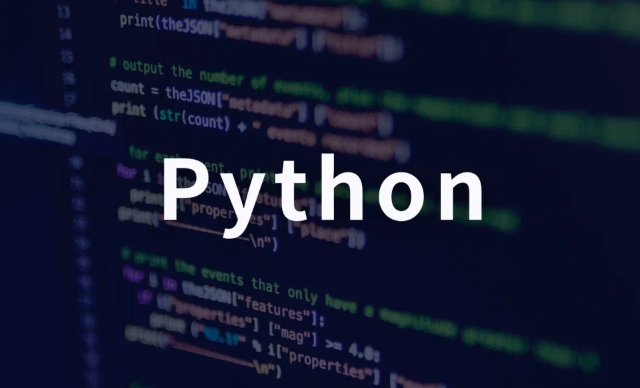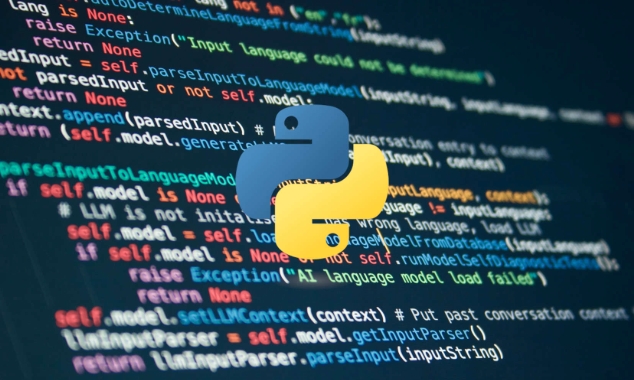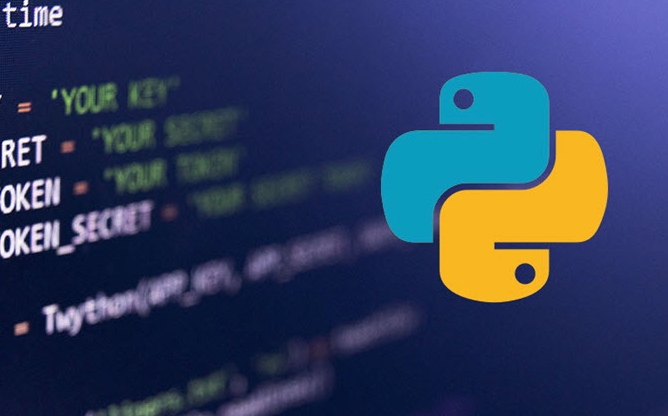Method overriding in Python
Jul 12, 2025 am 12:20 AMMethod rewriting is a technique to redefine the parent class's same name method in a subclass to achieve different behaviors. When a subclass defines a method with the same name as the parent class, the parent class method will be overridden and the subclass version will be executed when invoked. Note that when rewriting the method correctly: 1. The method names must be consistent; 2. The parameter list may be different but it is recommended to remain consistent; 3. You can use super() to call the parent class method to retain its functionality. Common scenarios include extended functions, polymorphic applications and framework customization. Details that need to be paid attention to are: if the subclass has no method defined, the parent class method will be searched along MRO; under multiple inheritance, you need to pay attention to the search order, and the default depth from left to right is preferred. Mastering method rewriting can improve code flexibility and reusability.

Method Overriding is a very common object-oriented programming technique in Python. Simply put, it is to redefine the parent class's method in the subclass to achieve different behaviors.

What is method rewriting?
Method rewriting occurs when a child class inherits from the parent class and defines a method with the same name as the parent class. At this time, the subclass method will "overwrite" the parent class's method with the same name. When this method is called, the subclass version is executed, not the parent version.
For example: the parent class has a speak() method that outputs "I am a parent", while the subclass overrides this method and makes it output "I am a child". When you create an instance of a subclass and call speak() , the output is the content of the subclass.

How to rewrite the method correctly?
There are several key points to pay attention to when you want to effectively rewrite method in Python:
- The method name must be the same : the method name in the subclass must be exactly the same as the method to be overridden in the parent class.
- Parameter lists can be different : Although the same parameters are not mandatory, it is generally recommended to keep the parameters consistent, otherwise it may cause confusion.
- Use
super()to call the parent class method (optional) : Sometimes you may want to retain some functions of the parent class while rewriting it. At this time, you can usesuper().method_name()to call the parent class method.
For example:

class Animal:
def speak(self):
print("Animal speaks")
class Dog(Animal):
def speak(self):
print("Dog barks")
super().speak() # Optional: Continue to call the parent class method Run Dog().speak() to output:
Dog barks Animal speaks
Common scenarios for method rewriting
Method rewriting is very suitable for the following situations:
- Extend the functions of existing classes : for example, you want to add new logic to the original basis instead of completely replacing it.
- Polymorphic application : Different subclasses have different implementations of the same method, and are suitable for processing multiple types of unified interfaces.
- Customization of frameworks or libraries : Many frameworks allow users to customize behavior by inheriting and rewriting certain methods.
For example, when developing GUI applications, there may be a base class Button that provides a default click event handling method on_click() . Subclasses such as SubmitButton and CancelButton can each override this method and perform different operations.
Small details are easy to ignore
Some places look inconspicuous, but they are prone to errors in actual use:
- If you forget to write a method in a subclass, Python will automatically search for the parent class, which is called Method Resolution Order (MRO).
- When rewriting methods under multiple inheritance, you should pay attention to the order of the order. Python is based on the depth from left to right.
- To view the method parsing order of the current class, you can use
ClassName.__mro__orhelp(ClassName).
Basically that's it. Mastering the method and rewriting will allow you to write more flexible and reusable code.
The above is the detailed content of Method overriding in Python. For more information, please follow other related articles on the PHP Chinese website!

Hot AI Tools

Undress AI Tool
Undress images for free

Undresser.AI Undress
AI-powered app for creating realistic nude photos

AI Clothes Remover
Online AI tool for removing clothes from photos.

Clothoff.io
AI clothes remover

Video Face Swap
Swap faces in any video effortlessly with our completely free AI face swap tool!

Hot Article

Hot Tools

Notepad++7.3.1
Easy-to-use and free code editor

SublimeText3 Chinese version
Chinese version, very easy to use

Zend Studio 13.0.1
Powerful PHP integrated development environment

Dreamweaver CS6
Visual web development tools

SublimeText3 Mac version
God-level code editing software (SublimeText3)

Hot Topics
 How to handle API authentication in Python
Jul 13, 2025 am 02:22 AM
How to handle API authentication in Python
Jul 13, 2025 am 02:22 AM
The key to dealing with API authentication is to understand and use the authentication method correctly. 1. APIKey is the simplest authentication method, usually placed in the request header or URL parameters; 2. BasicAuth uses username and password for Base64 encoding transmission, which is suitable for internal systems; 3. OAuth2 needs to obtain the token first through client_id and client_secret, and then bring the BearerToken in the request header; 4. In order to deal with the token expiration, the token management class can be encapsulated and automatically refreshed the token; in short, selecting the appropriate method according to the document and safely storing the key information is the key.
 How to test an API with Python
Jul 12, 2025 am 02:47 AM
How to test an API with Python
Jul 12, 2025 am 02:47 AM
To test the API, you need to use Python's Requests library. The steps are to install the library, send requests, verify responses, set timeouts and retry. First, install the library through pipinstallrequests; then use requests.get() or requests.post() and other methods to send GET or POST requests; then check response.status_code and response.json() to ensure that the return result is in compliance with expectations; finally, add timeout parameters to set the timeout time, and combine the retrying library to achieve automatic retry to enhance stability.
 Python variable scope in functions
Jul 12, 2025 am 02:49 AM
Python variable scope in functions
Jul 12, 2025 am 02:49 AM
In Python, variables defined inside a function are local variables and are only valid within the function; externally defined are global variables that can be read anywhere. 1. Local variables are destroyed as the function is executed; 2. The function can access global variables but cannot be modified directly, so the global keyword is required; 3. If you want to modify outer function variables in nested functions, you need to use the nonlocal keyword; 4. Variables with the same name do not affect each other in different scopes; 5. Global must be declared when modifying global variables, otherwise UnboundLocalError error will be raised. Understanding these rules helps avoid bugs and write more reliable functions.
 Python FastAPI tutorial
Jul 12, 2025 am 02:42 AM
Python FastAPI tutorial
Jul 12, 2025 am 02:42 AM
To create modern and efficient APIs using Python, FastAPI is recommended; it is based on standard Python type prompts and can automatically generate documents, with excellent performance. After installing FastAPI and ASGI server uvicorn, you can write interface code. By defining routes, writing processing functions, and returning data, APIs can be quickly built. FastAPI supports a variety of HTTP methods and provides automatically generated SwaggerUI and ReDoc documentation systems. URL parameters can be captured through path definition, while query parameters can be implemented by setting default values ??for function parameters. The rational use of Pydantic models can help improve development efficiency and accuracy.
 Python for loop with timeout
Jul 12, 2025 am 02:17 AM
Python for loop with timeout
Jul 12, 2025 am 02:17 AM
Add timeout control to Python's for loop. 1. You can record the start time with the time module, and judge whether it is timed out in each iteration and use break to jump out of the loop; 2. For polling class tasks, you can use the while loop to match time judgment, and add sleep to avoid CPU fullness; 3. Advanced methods can consider threading or signal to achieve more precise control, but the complexity is high, and it is not recommended for beginners to choose; summary key points: manual time judgment is the basic solution, while is more suitable for time-limited waiting class tasks, sleep is indispensable, and advanced methods are suitable for specific scenarios.
 Python for loop over a tuple
Jul 13, 2025 am 02:55 AM
Python for loop over a tuple
Jul 13, 2025 am 02:55 AM
In Python, the method of traversing tuples with for loops includes directly iterating over elements, getting indexes and elements at the same time, and processing nested tuples. 1. Use the for loop directly to access each element in sequence without managing the index; 2. Use enumerate() to get the index and value at the same time. The default index is 0, and the start parameter can also be specified; 3. Nested tuples can be unpacked in the loop, but it is necessary to ensure that the subtuple structure is consistent, otherwise an unpacking error will be raised; in addition, the tuple is immutable and the content cannot be modified in the loop. Unwanted values can be ignored by \_. It is recommended to check whether the tuple is empty before traversing to avoid errors.
 How to parse large JSON files in Python?
Jul 13, 2025 am 01:46 AM
How to parse large JSON files in Python?
Jul 13, 2025 am 01:46 AM
How to efficiently handle large JSON files in Python? 1. Use the ijson library to stream and avoid memory overflow through item-by-item parsing; 2. If it is in JSONLines format, you can read it line by line and process it with json.loads(); 3. Or split the large file into small pieces and then process it separately. These methods effectively solve the memory limitation problem and are suitable for different scenarios.
 What are python default arguments and their potential issues?
Jul 12, 2025 am 02:39 AM
What are python default arguments and their potential issues?
Jul 12, 2025 am 02:39 AM
Python default parameters are evaluated and fixed values ??when the function is defined, which can cause unexpected problems. Using variable objects such as lists as default parameters will retain modifications, and it is recommended to use None instead; the default parameter scope is the environment variable when defined, and subsequent variable changes will not affect their value; avoid relying on default parameters to save state, and class encapsulation state should be used to ensure function consistency.






